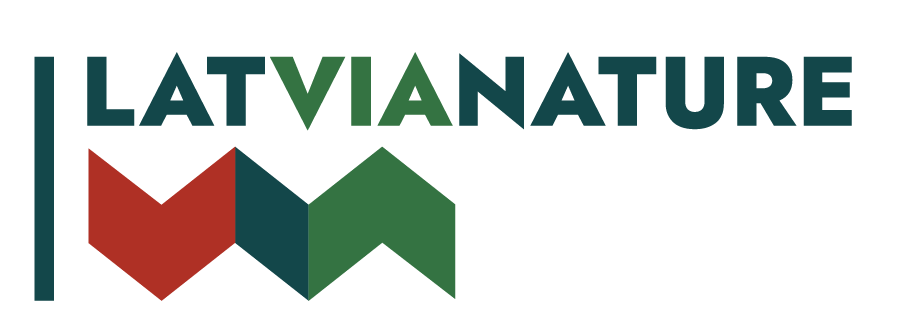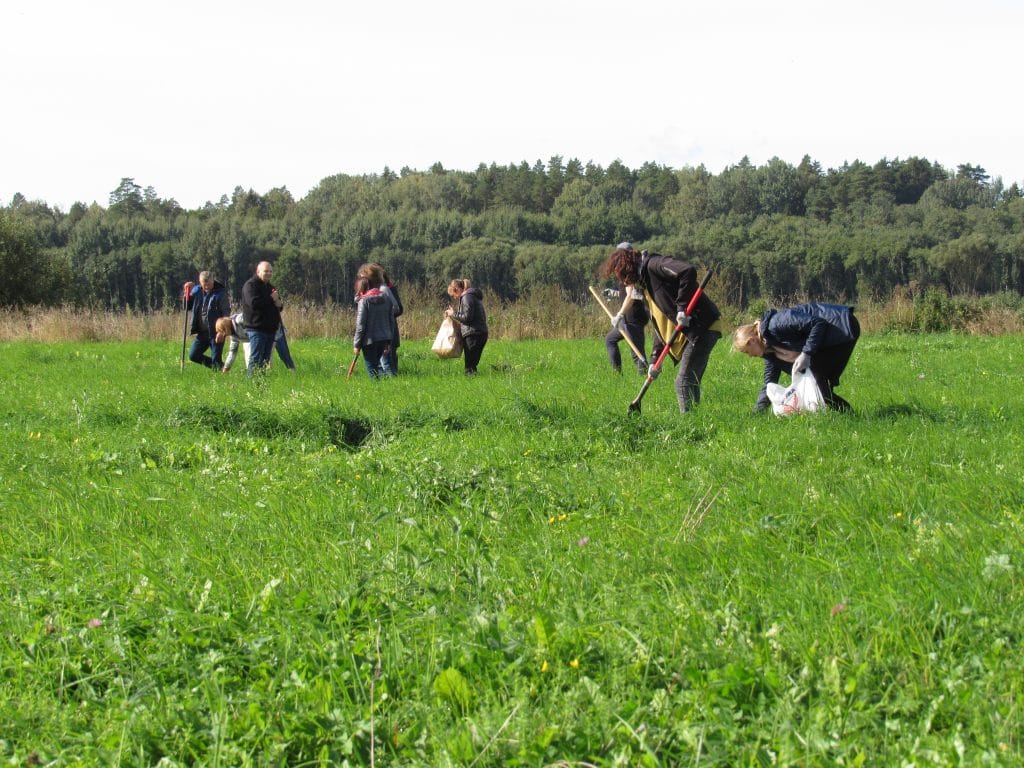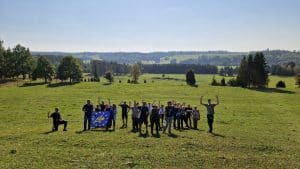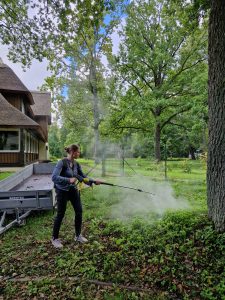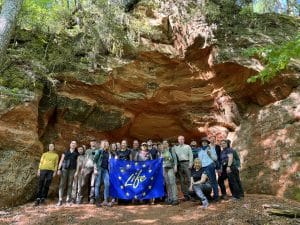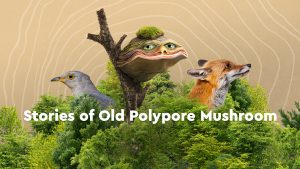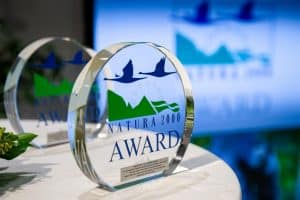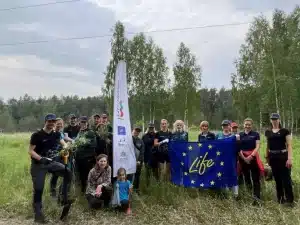The seeding tradition in Ķemeri NP started in 2008 with small experimental plots and extended to several hectares in 2020 (the Dundurpļavas pasture). The Dundurpļavas grassland massif is a typical example of grasslands which were heavily drained and converted into intensively cultivated agricultural lands during the Soviet period. Though the hydrology of the area has been restored, and the grasslands are used for hay collecting and grazing, the recovery of semi-natural plant species composition is very slow. The main reason is the lack of a donor area in the surrounding landscape.
Agnese Priede, the Team Leader of Habitats and Species Experts of the LIFE-IP LatViaNature project, explains that this method has already been tested in several European countries and elsewhere in the world.
“In Latvia, the method is still new, not yet used at a broader scale. In fact, it is the re-creation of protected habitats. The seeds are sown on, what can be understood as meadow species diversity islands, from where they spread further. It is important to note that the vast majority of wild plant seeds do not germinate in the first year, but may appear and become recognisable only after several years. Therefore, we will be able to analyse the first results in about two or three years,” explains A.Priede.
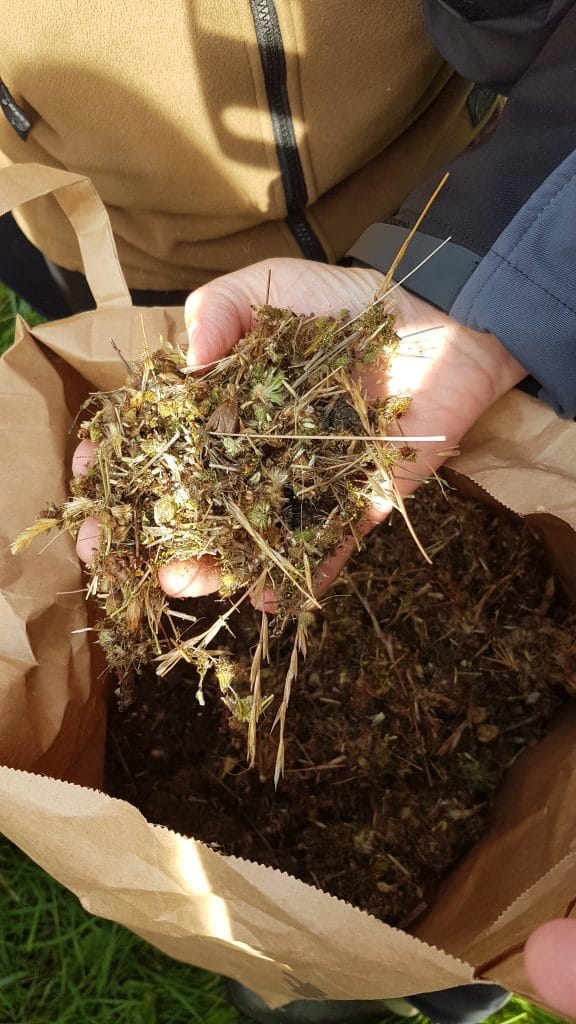
The seed mixture used contains more than 50 native grassland plant species characteristic for semi-natural grasslands. Some of them are considered indicators of semi-natural grasslands (= protected grassland habitats), for instance: Agrimonia eupatoria, Carex flacca, Galium boreale, Primula veris and Trollius europaeus. The seeds were collected in the summer of 2021, mostly in the meadows of Ķemeri National Park and Abava Valley (W Latvia). The material is hand-picked, dried at room temperature and then chopped and sorted to ensure there is no undesirable admixture of neither invasive nor aggressive (expansive) native plant species.
Due to the degradation of natural grassland habitats, some of the natural grassland species in Latvia are disappearing relatively quickly, therefore sowing natural grasslands can become an opportunity to improve species diversity and promote faster regeneration of natural grasslands.
The meadow habitat restoration work took place within the initiative “Let’s do it for nature!”, which is implemented by the Nature Conservation Agency together with Pasaules Dabas Fonds. The initiative annually involve more than 1000 volunteers annually in various nature conservation activities throughout Latvia. They work together to restore river streams, clear meadows from bushes, collect reeds and eradicate invasive species. More: www.darudabai.lv
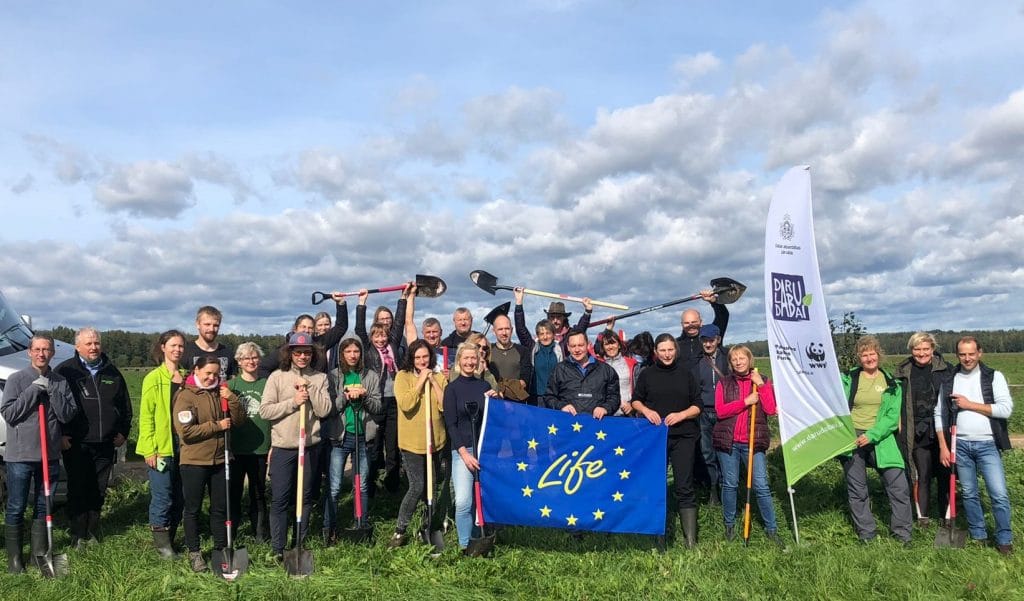
The restoration of meadow habitat work was a joint effort of the Agency, LIFE-IP LatViaNature representatives, Ķemeri National Park Fund, Pasaules Dabas Fonds, as well as colleagues from Lithuania: Aukštaitija National Park and Labanoras Regional Park Authority and Kurtuvėnai Regional Park administration.
